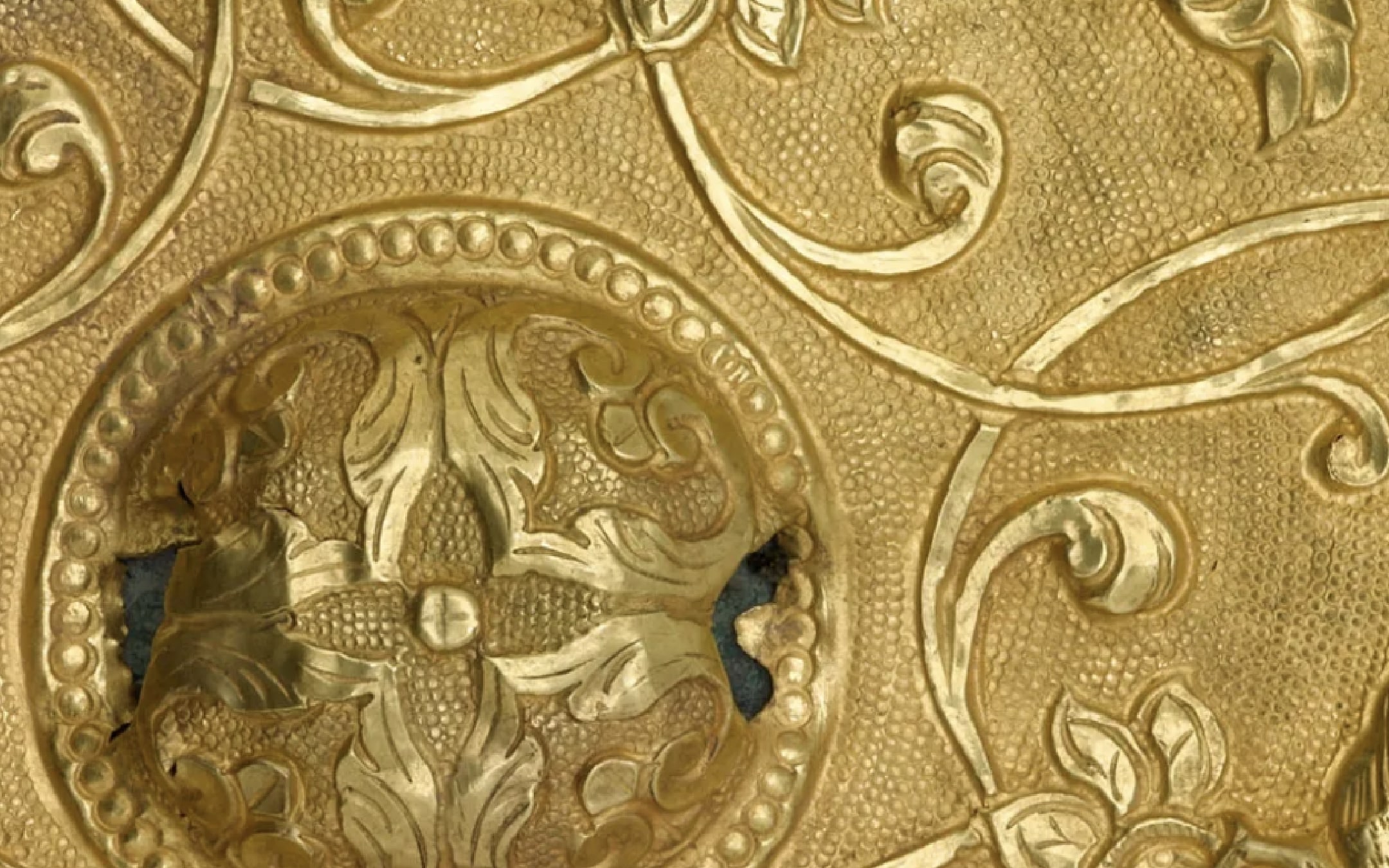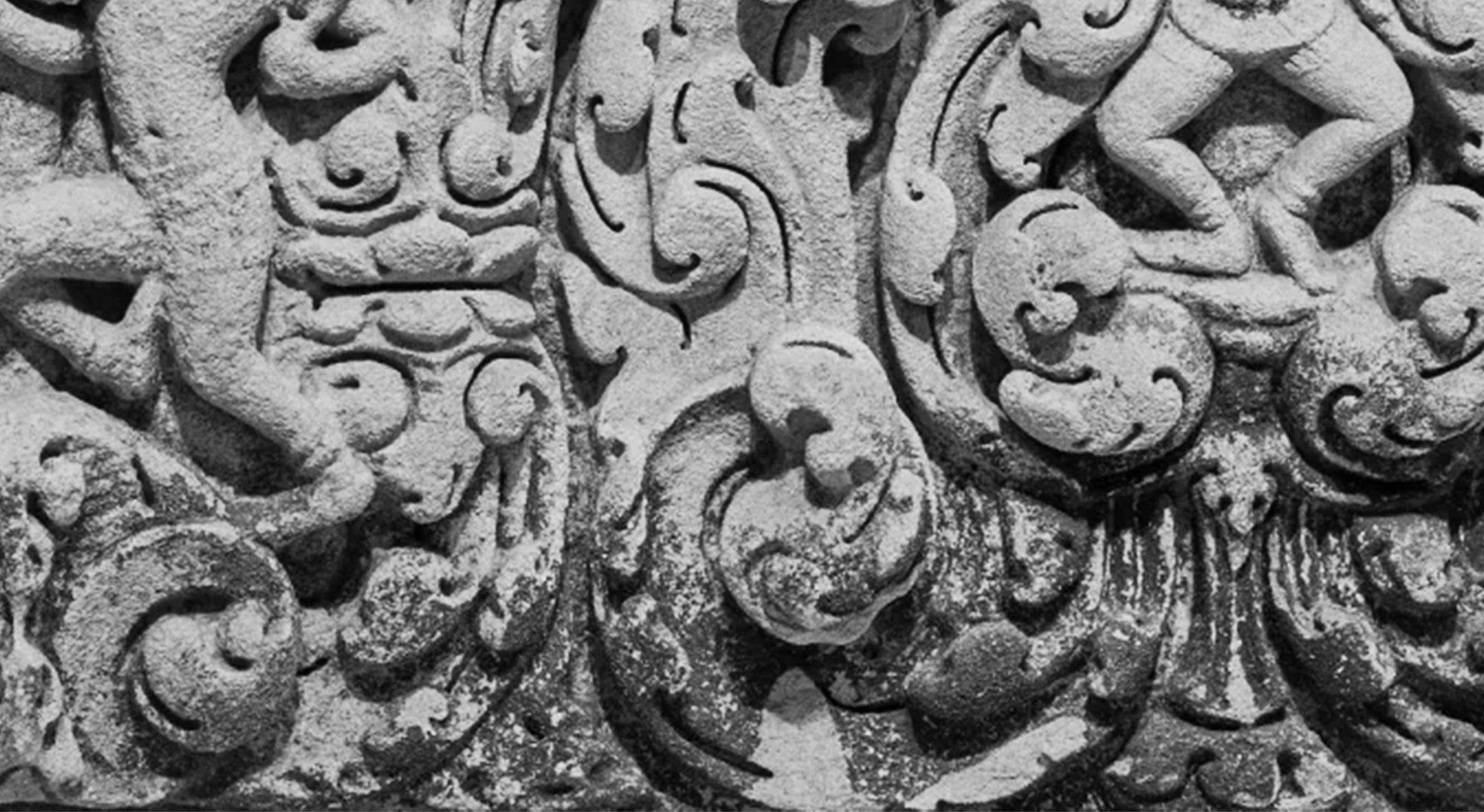March 24–July 29, 2018
-
Dates
-
Location
Arthur M. Sackler Gallery | Gallery 24
-
Collection Area
Arts of the Islamic World
With their brilliant designs, ikats are among the most distinct fabrics produced in Central Asia. The name, derived from the Malaysian word for “to tie,” refers to the distinct technique of making these textiles: bundles of threads are painstakingly patterned by repeated binding and dyeing before being woven. In present-day Uzbekistan and the Fergana Valley, the fabric is known as abri (cloud) and the technique as abrbandi (tying clouds), referring to the fluid yet bold motifs in bright colors.
Not surprisingly, ikats caught the attention of contemporary designers, most notably Oscar de la Renta (died 2014). In 2005, de la Renta included ikat designs in his collections, an innovation that was soon followed by other designers in the United States and elsewhere. Since then, ikat motifs have become ubiquitous—from couture gowns to jeans and T-shirts, and from carpets and sofa coverings to stationery and wall papers.
To Dye For: Ikats from Central Asia brings together about thirty of the finest historical Central Asian ikat hangings and coats from the Freer|Sackler collections, donated by Guido Goldman, as well as several of Oscar de la Renta’s iconic creations. The aim is to explore the original use and function of these dazzling fabrics and the enduring appeal of their extraordinary designs.
Exhibition Highlights
Nothing signaled a person’s rank in Central Asia as conspicuously as a boldly patterned ikat coat. As valuable personal belongings, cherished ikat robes were handed down from one generation to the next and were eventually recycled into hangings, covers, or trims.
After you look at the dizzying designs of ikats for a while, you might begin to see familiar motifs—a comb, a jug, or a pendant here, a pomegranate or a flowering shrub there. These stylized and abstracted elements are transformed into repeated designs that dance across the surface of the fabrics. By modifying the color scheme or varying the scale of motifs, craftsmen introduced endless varieties of similar patterns with stunning visual results.
Inspired by the “unbelievably rich” colors of traditional ikats, Oscar de la Renta (1932–2014) was the first contemporary designer to introduce the distinct fabric into Western fashion. His creative responses to ikats include a classic trench coat that playfully appropriates Central Asian patterns. In contrast, the elegant fur-trimmed evening coat made from traditional ikat fabric is his contemporary interpretation of a Central Asian coat. De la Renta’s appreciation of ikat is perhaps best expressed in his evening gown from 2013. A masterful adaptation of both the outside and inside of a historic Uzbek robe, it integrates a characteristic ikat pattern and an exuberant floral design that refers to the linings found in so many Central Asian costumes.
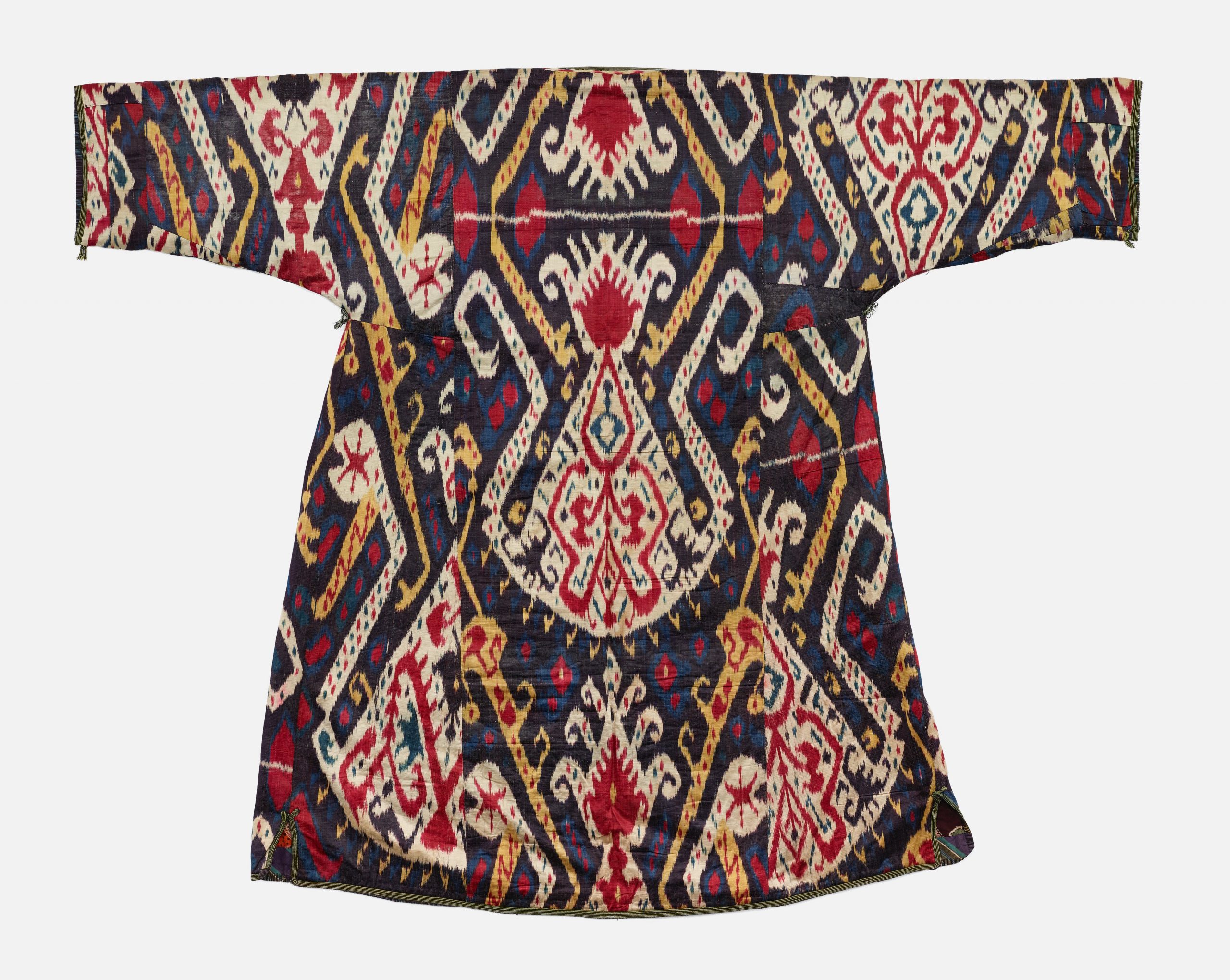
Woman's robe
Central Asia, late 19th century
Silk and cotton
Gift of Guido Goldman
Arthur M. Sackler Gallery, S2005.13
Image 1 of 18

Ikat-patterned gown
Silk and wool jacquard
Oscar de la Renta Collection, fall 2013 collection
ELS2018.5.1
Image 2 of 18
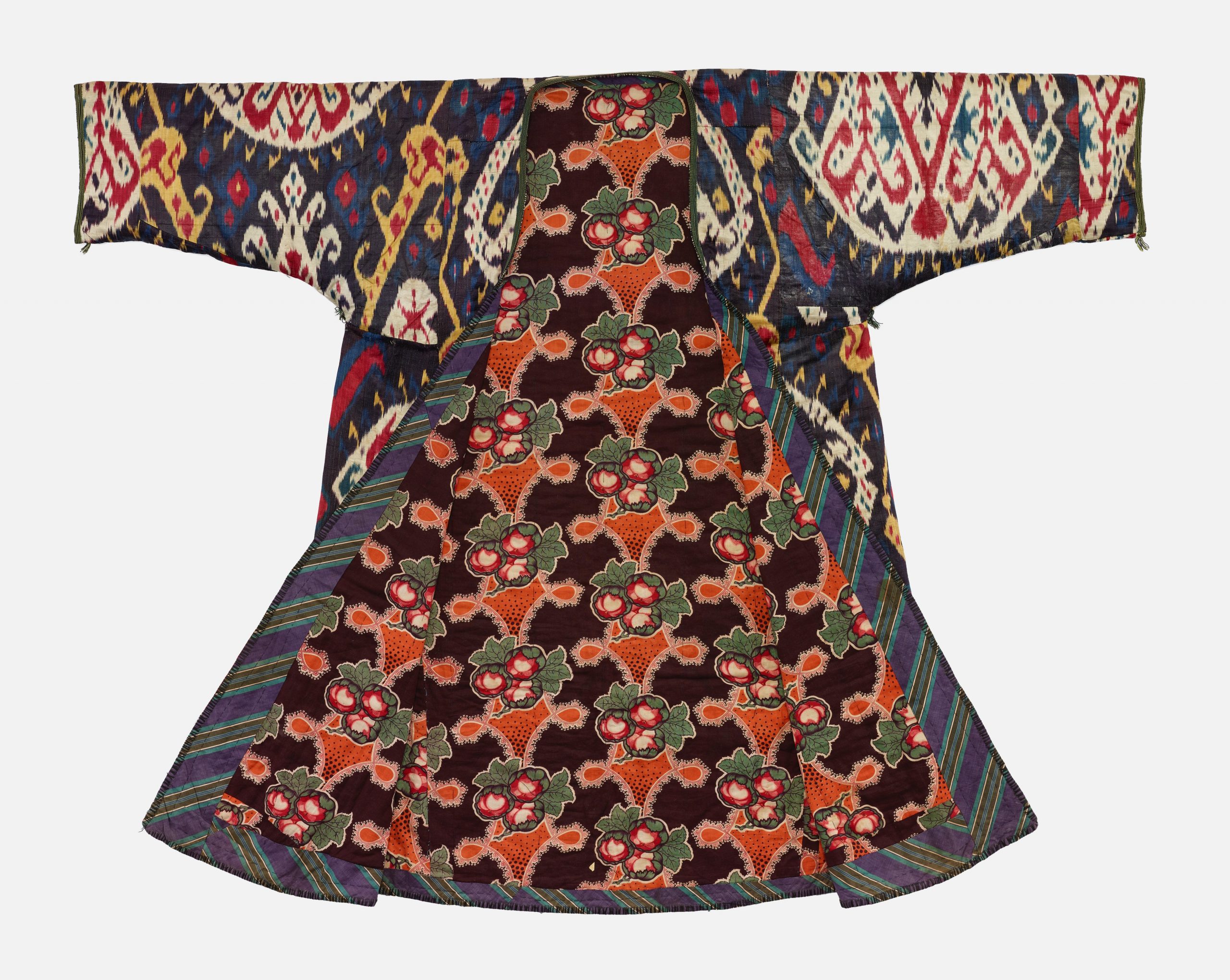
Woman's robe
Central Asia, late 19th century
Silk and cotton
Gift of Guido Goldman
Arthur M. Sackler Gallery, S2005.13
Image 3 of 18
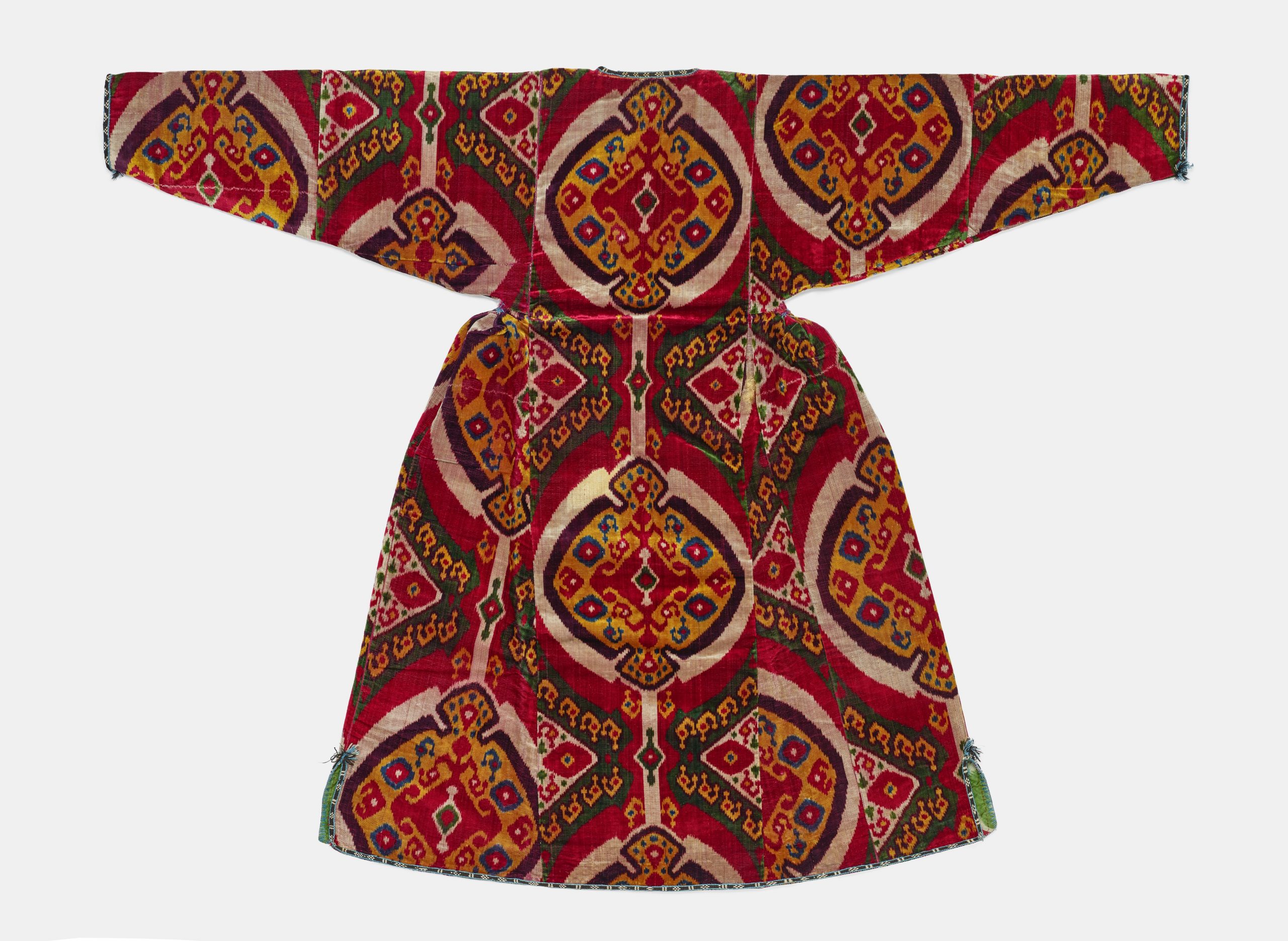
Woman's robe (munisak)
Central Asia, 1850–75
Silk velvet
Gift of Guido Goldman
Arthur M. Sackler Gallery, S2004.94
Image 4 of 18
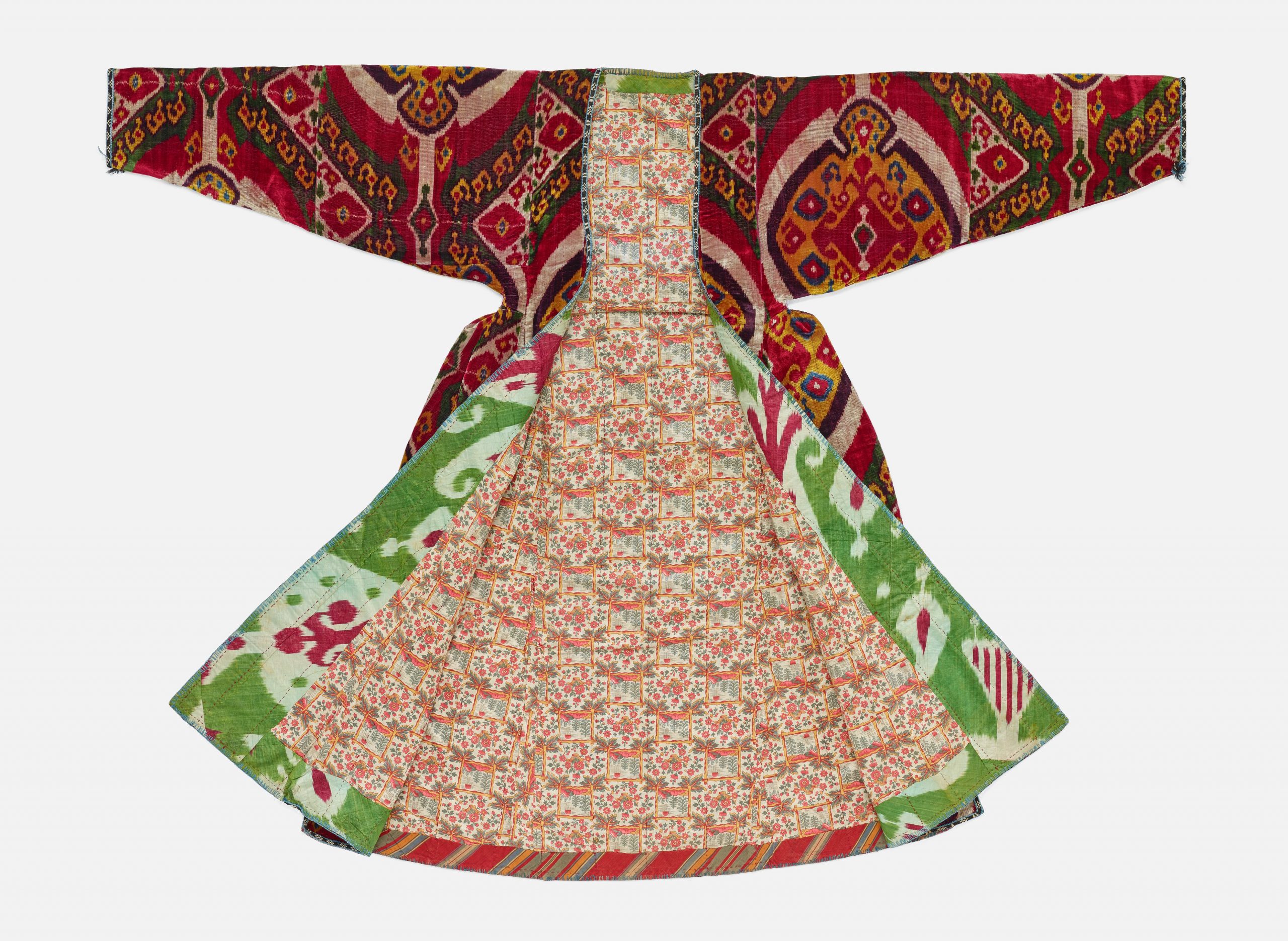
Woman's robe (munisak)
Central Asia, 1850–75
Silk velvet
Gift of Guido Goldman
Arthur M. Sackler Gallery, S2004.94
Image 5 of 18
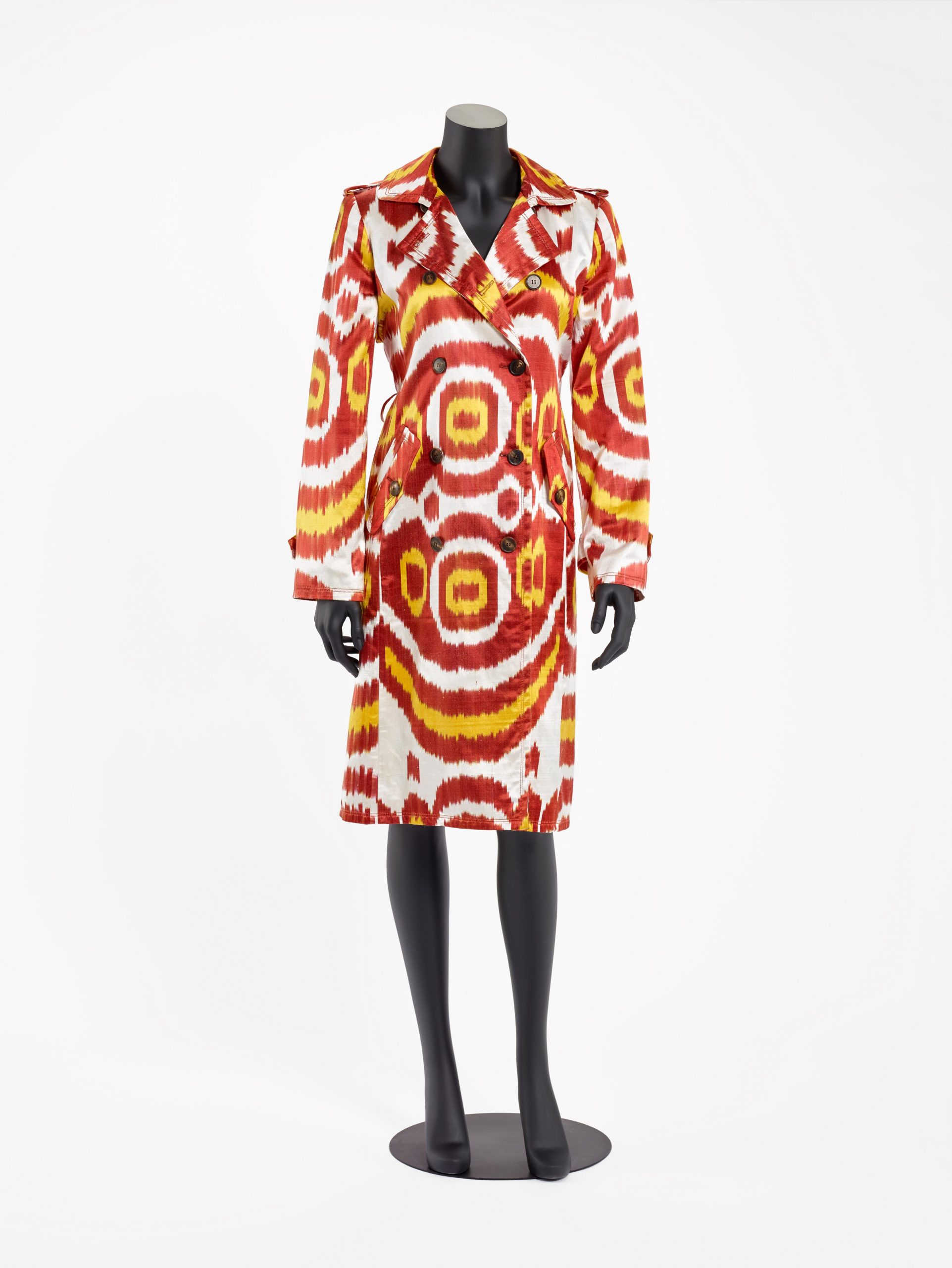
Ikat classic trench coat
Silk and cotton
Oscar de la Renta Collection, spring 2005 collection
ELS2018.5.2
Image 6 of 18
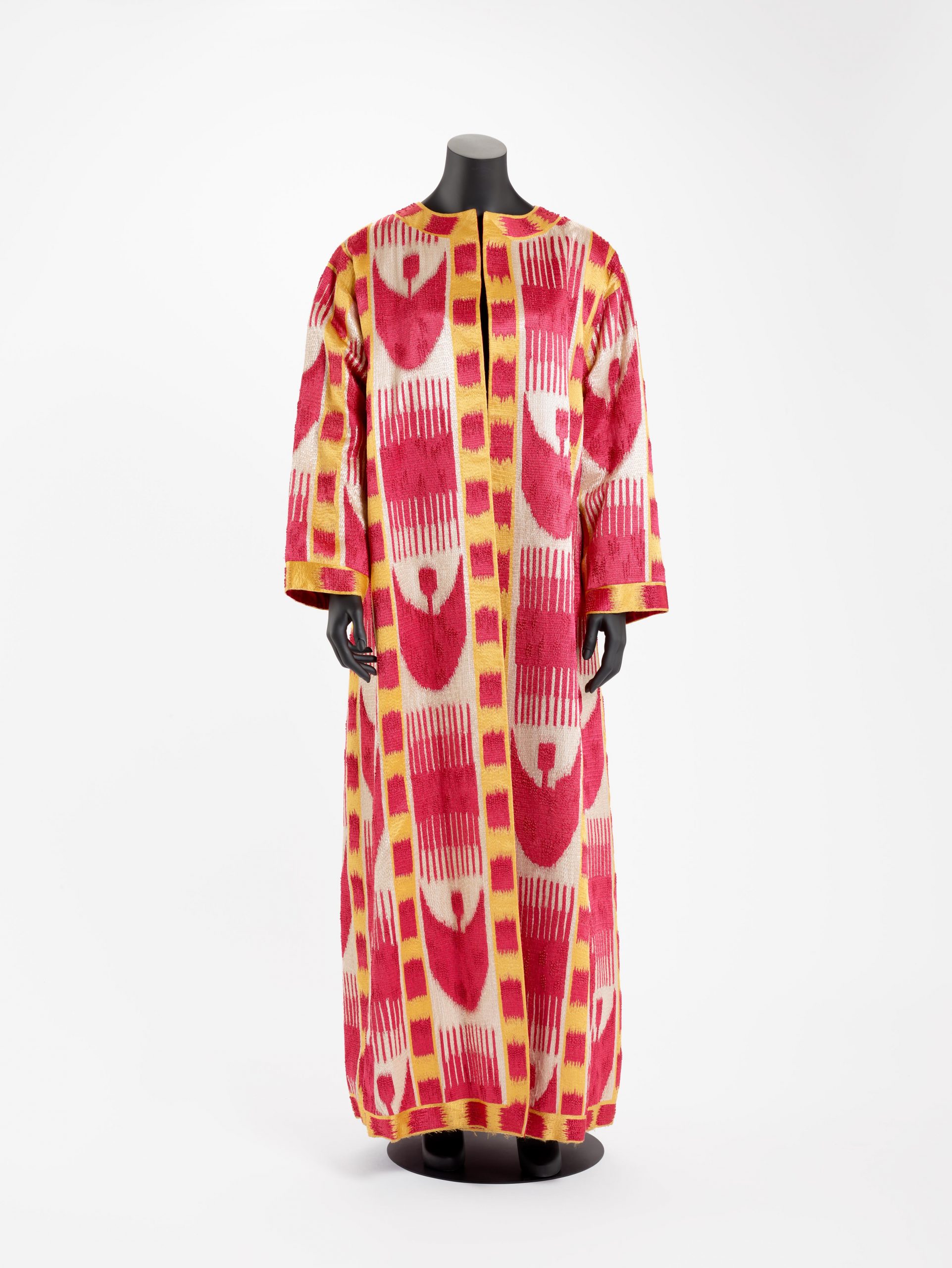
Coat with large red crescents and comb design
Polychrome silk embroidery
Balmain Haute Couture, spring/summer 1997 collection; designed by Oscar de la Renta
Collection of Annette de la Renta
ELS2018.6.2
Image 7 of 18
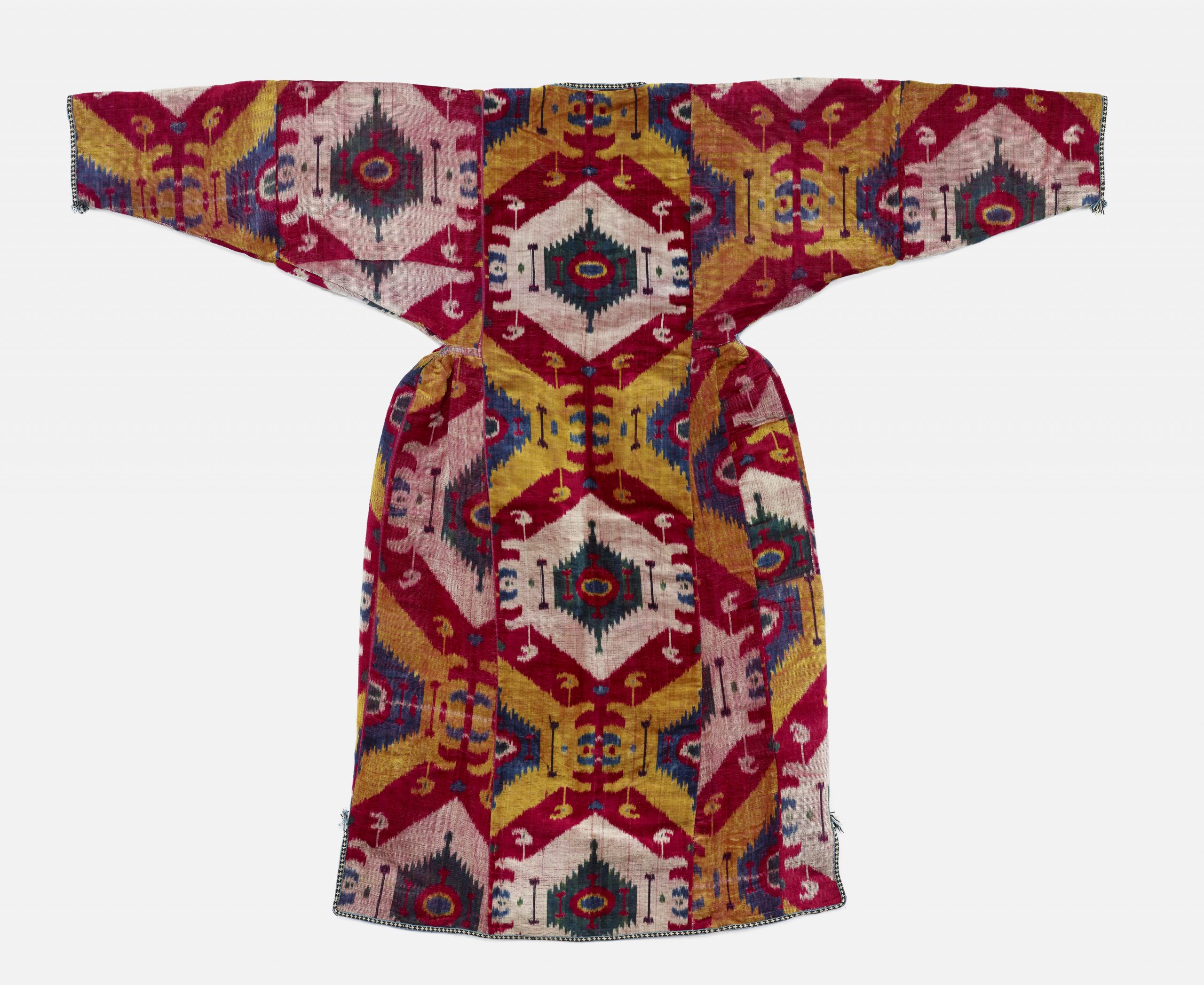
Woman's robe (munisak)
Central Asia, 1850–75
Silk velvet
Gift of Guido Goldman
Arthur M. Sackler Gallery, S2004.96
Image 8 of 18
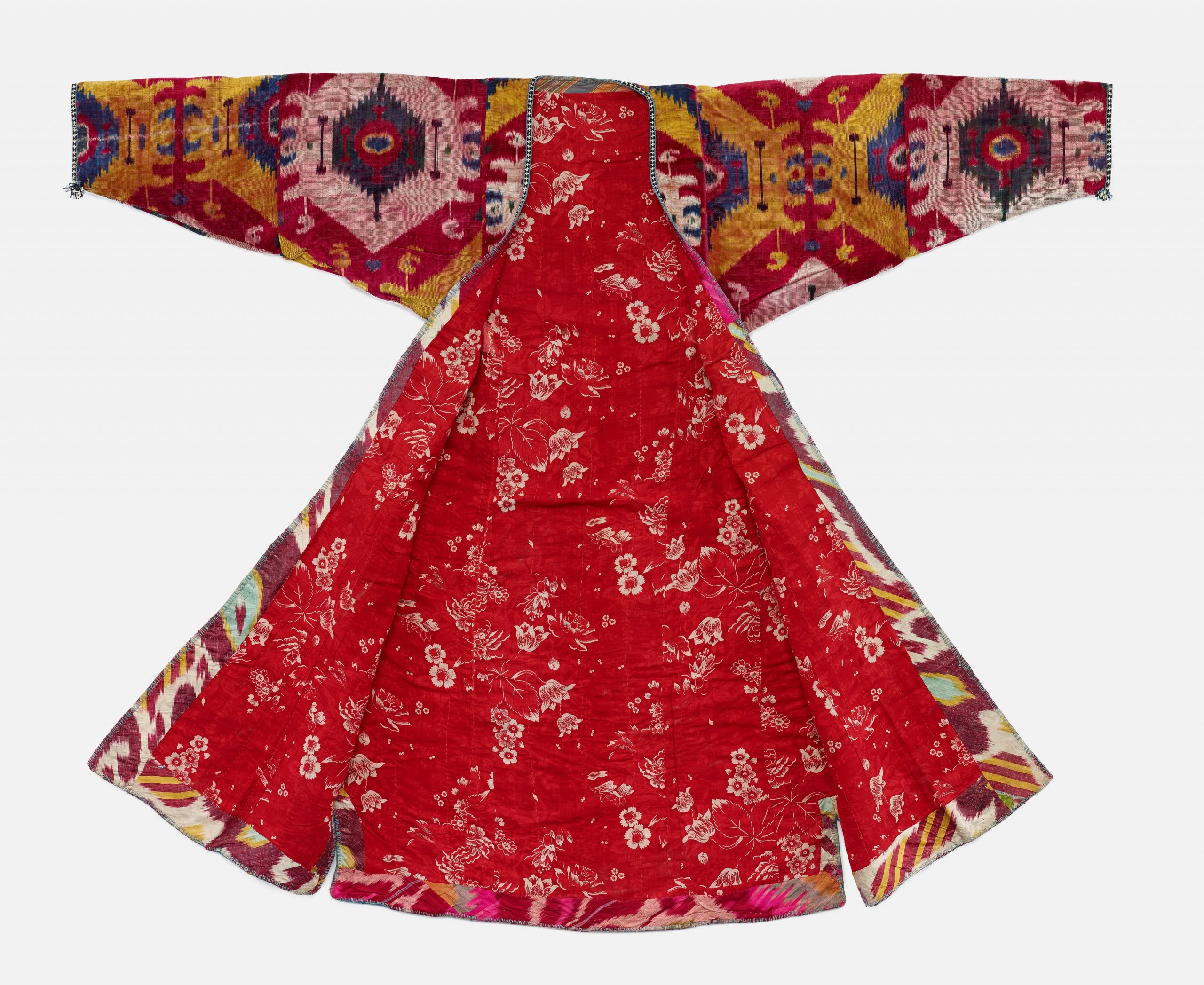
Woman's robe (munisak)
Central Asia, 1850–75
Silk velvet
Gift of Guido Goldman
Arthur M. Sackler Gallery, S2004.96
Image 9 of 18
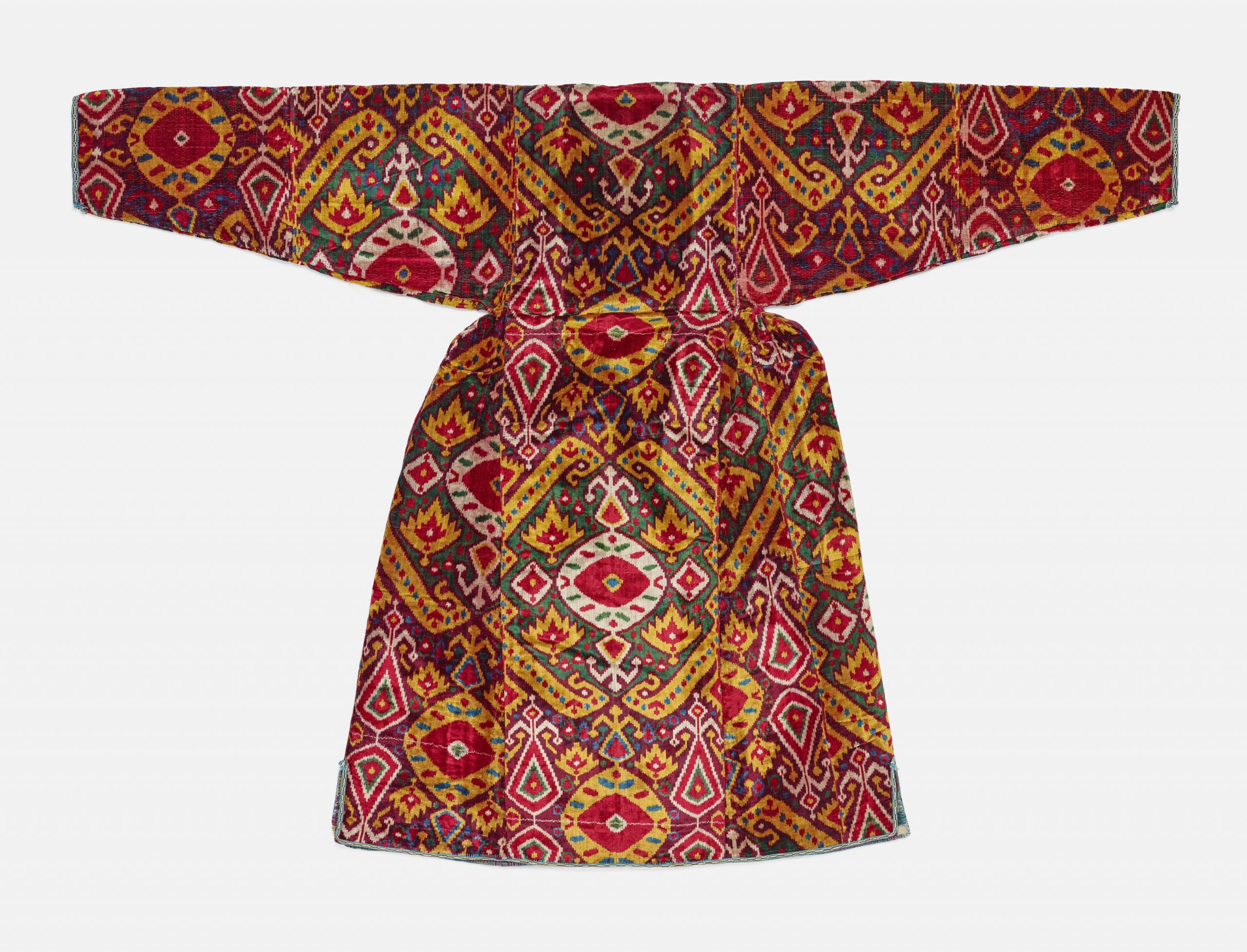
Woman's robe (munisak)
Central Asia, 1850–75
Silk velvet
Gift of Guido Goldman
Arthur M. Sackler Gallery, S2004.95
Image 10 of 18
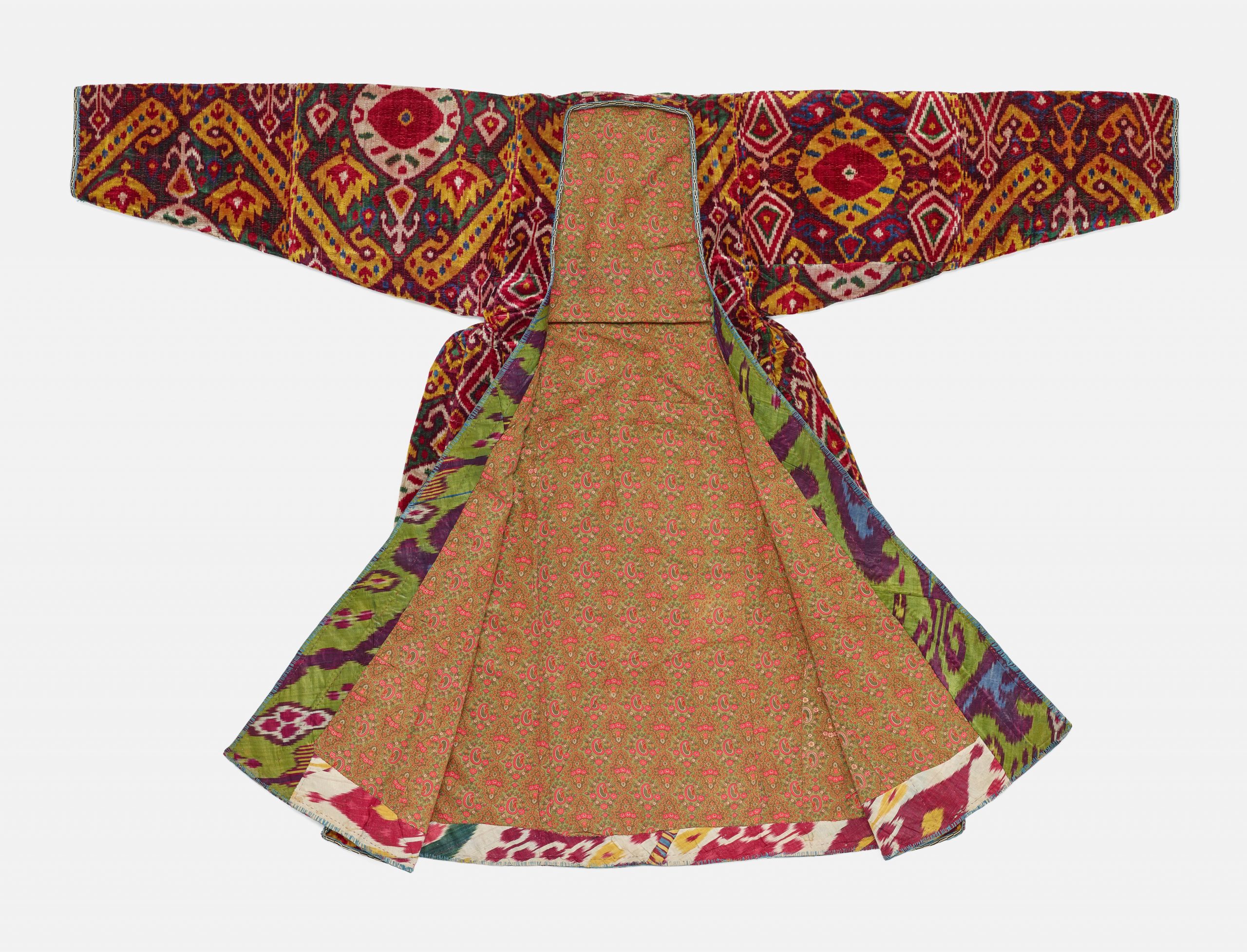
Woman's robe (munisak)
Central Asia, 1850–75
Silk velvet
Gift of Guido Goldman
Arthur M. Sackler Gallery, S2004.95
Image 11 of 18
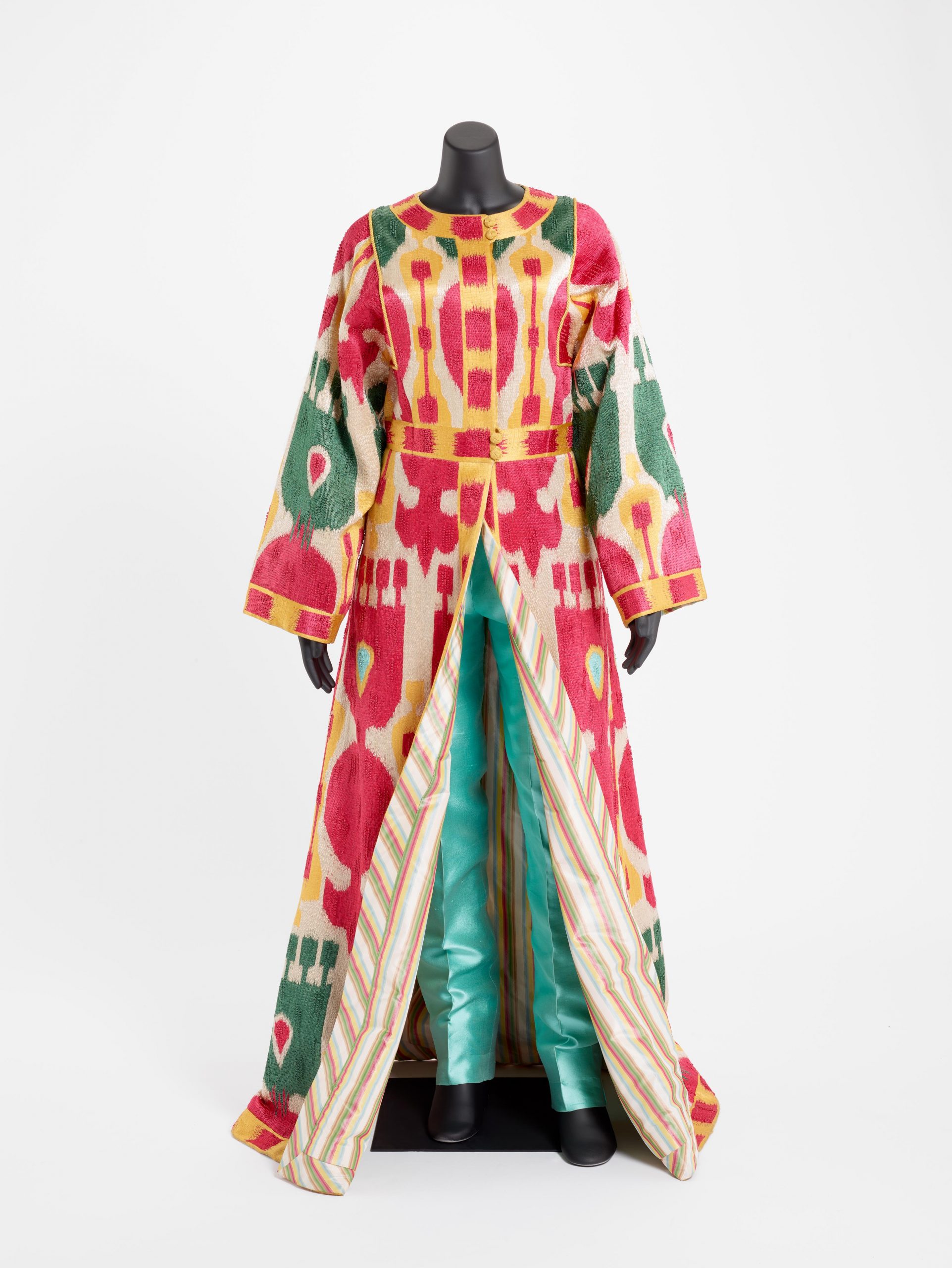
Evening ensemble
Polychrome silk embroidery and silk taffeta; pants of silk shatung
Designed by Oscar de la Renta
Balmain Haute Couture, spring/summer 1997 collection; designed by Oscar de la Renta
Collection of Annette de la Renta
ELS2018.6.1
Image 12 of 18
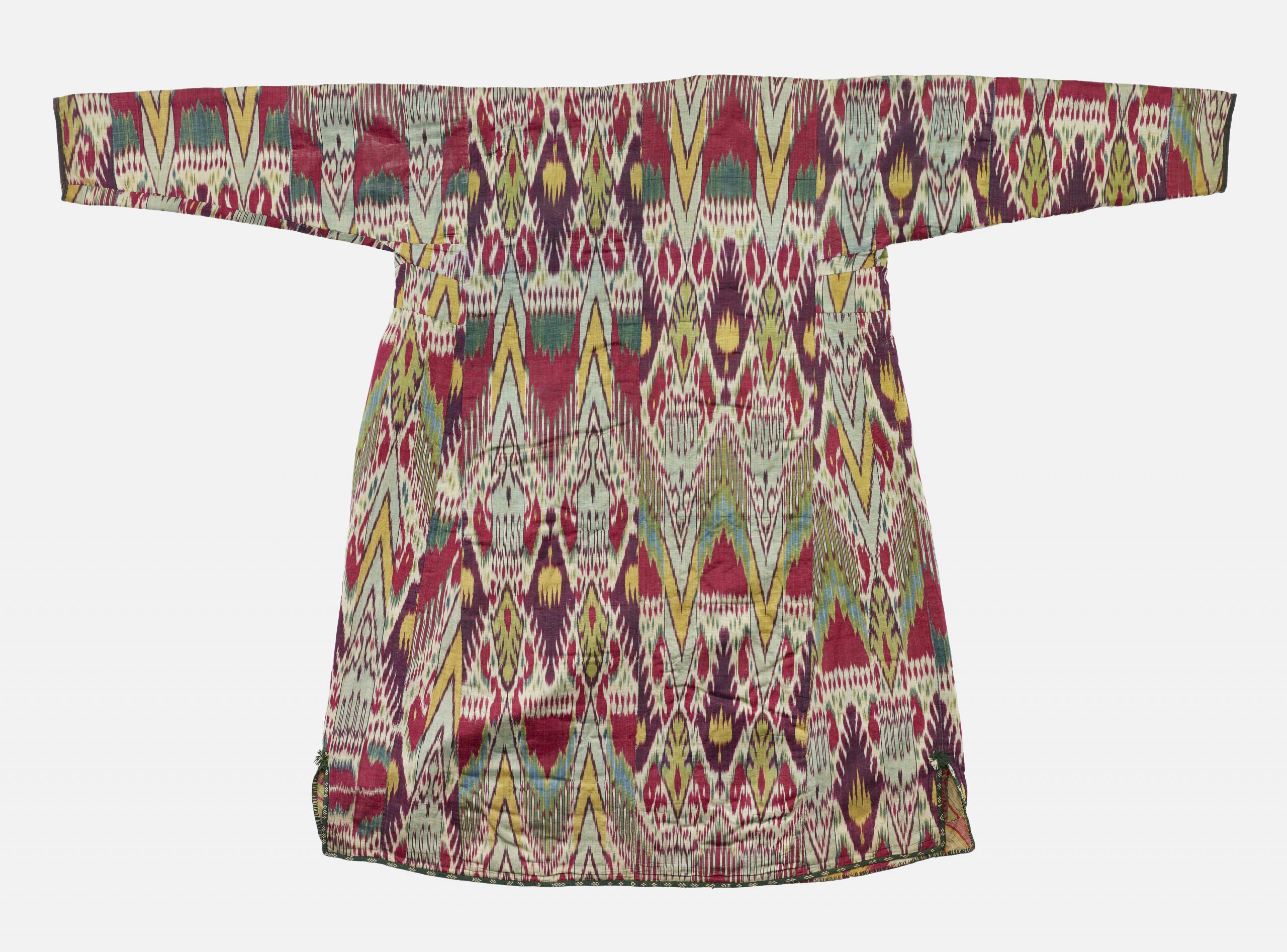
Woman's robe
Central Asia, 1800–50
Silk and cotton
Gift of Guido Goldman
Arthur M. Sackler Gallery, S2005.15
Image 13 of 18
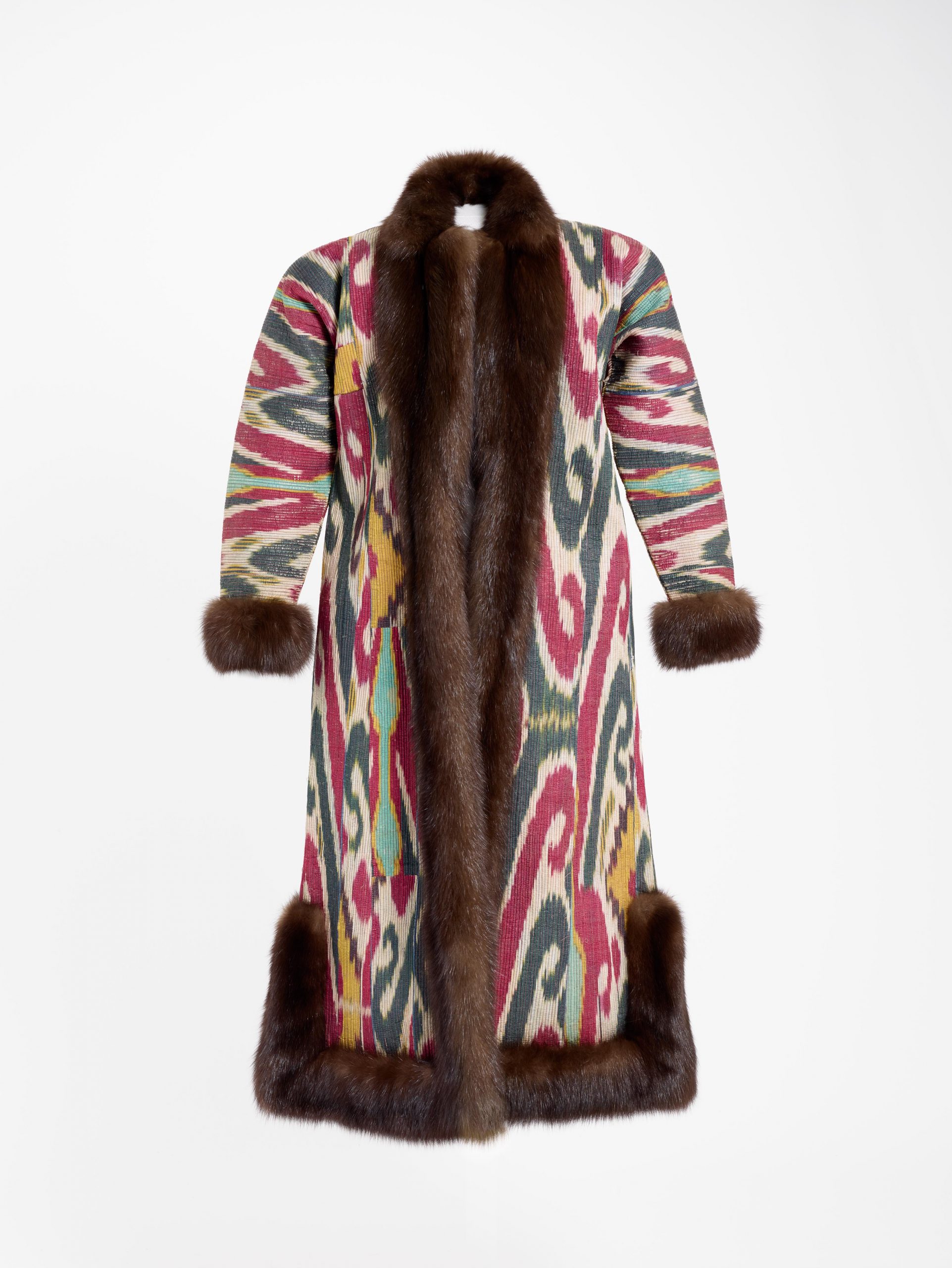
Coat with fur trim
Silk, cotton, and wool with sable
Balmain Haute Couture, fall/winter 2000 collection; designed by Oscar de la Renta
Collection of Annette de la Renta
ELS2018.6.3
Image 14 of 18
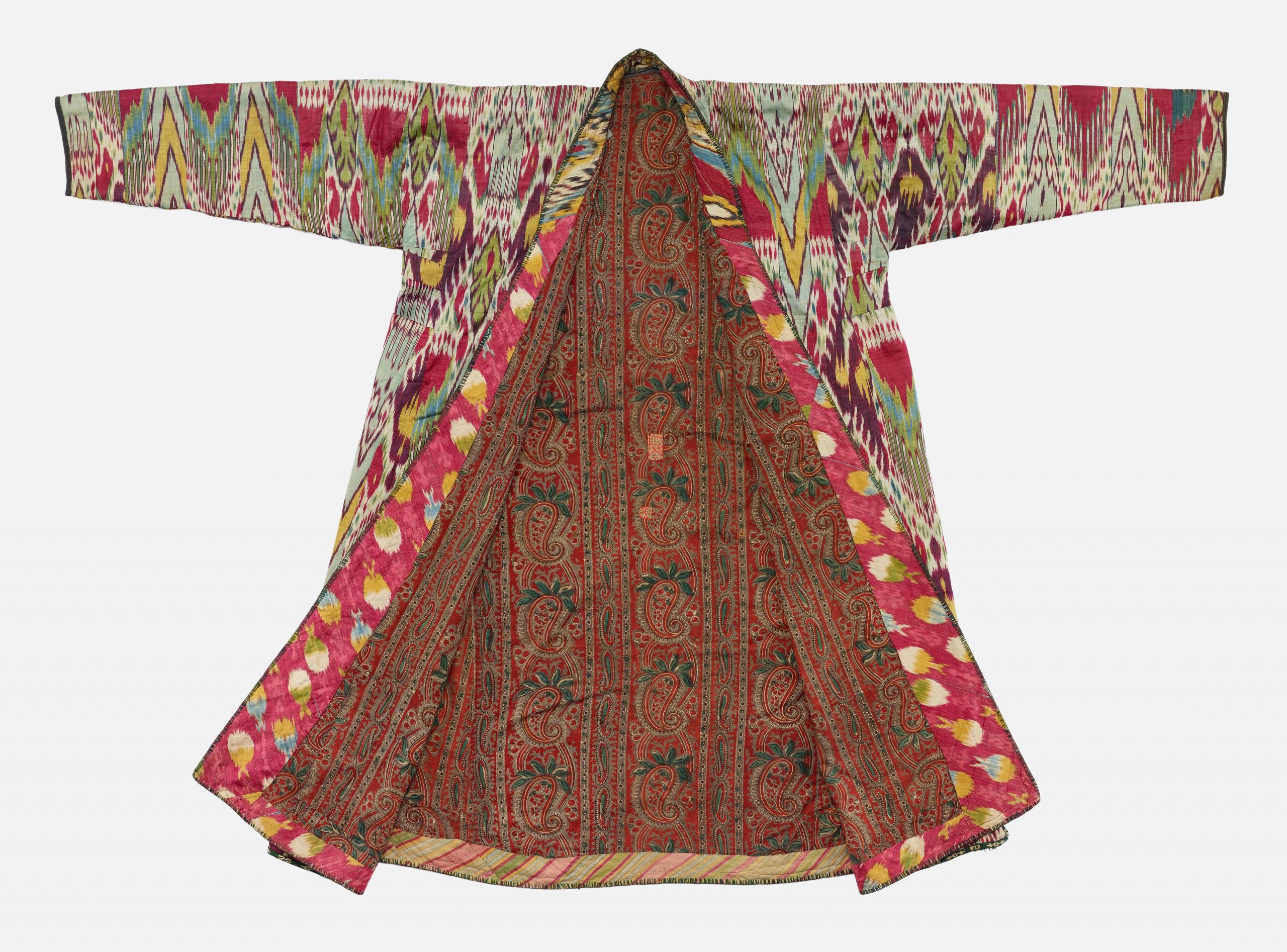
Woman's robe
Central Asia, 1800–50
Silk and cotton
Gift of Guido Goldman
Arthur M. Sackler Gallery, S2005.15
Image 15 of 18

Coat with red and black pomegranate design
Silk, cotton, and wool
Balmain Haute Couture, fall/winter 2000 collection; designed by Oscar de la Renta
Collection of Annette de la Renta
ELS2018.6.4
Image 16 of 18
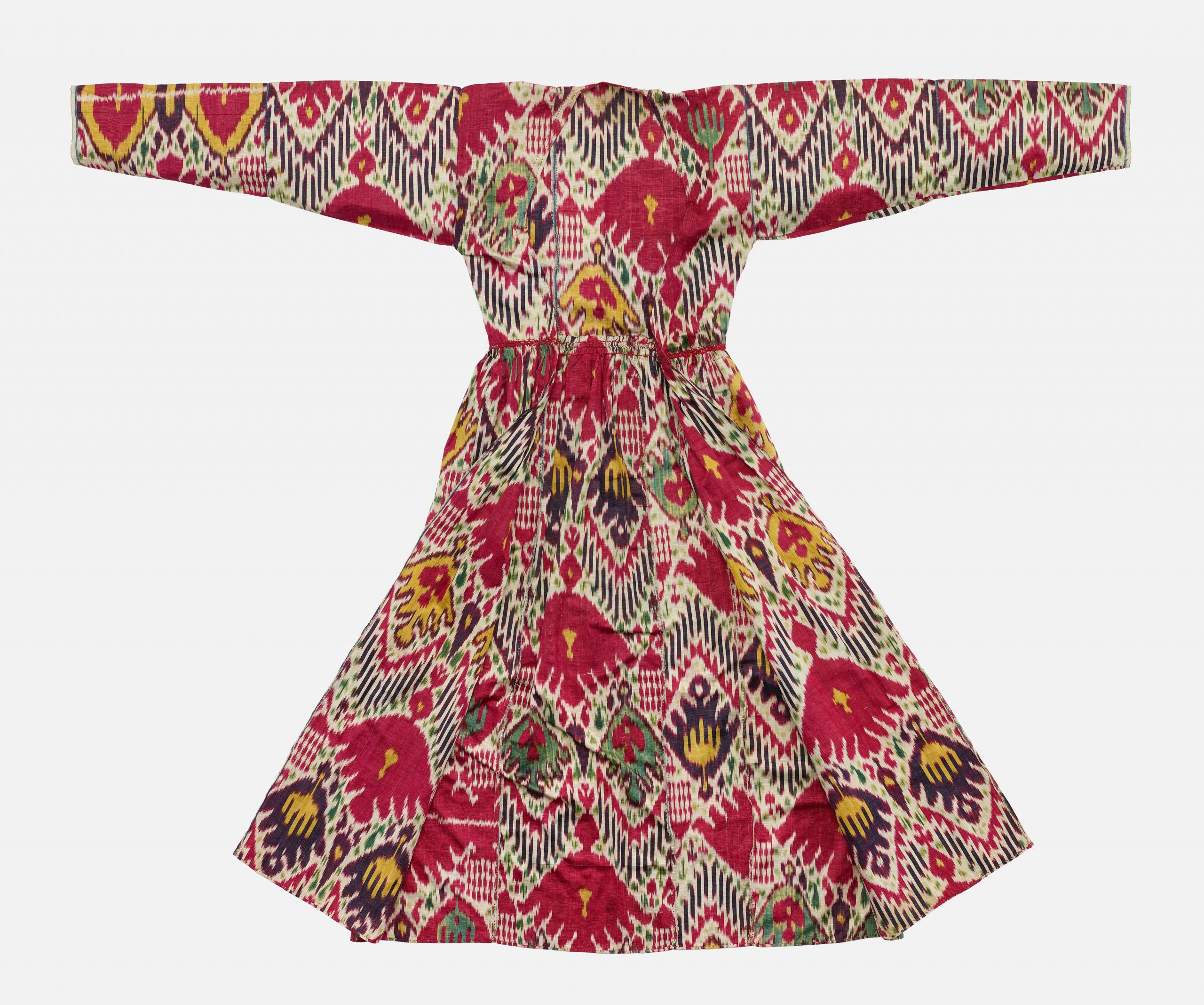
Woman's robe
Uzbekistan, Bukhara, 1820–40
Silk and cotton
Gift of Guido Goldman
Arthur M. Sackler Gallery, S2005.14
Image 17 of 18
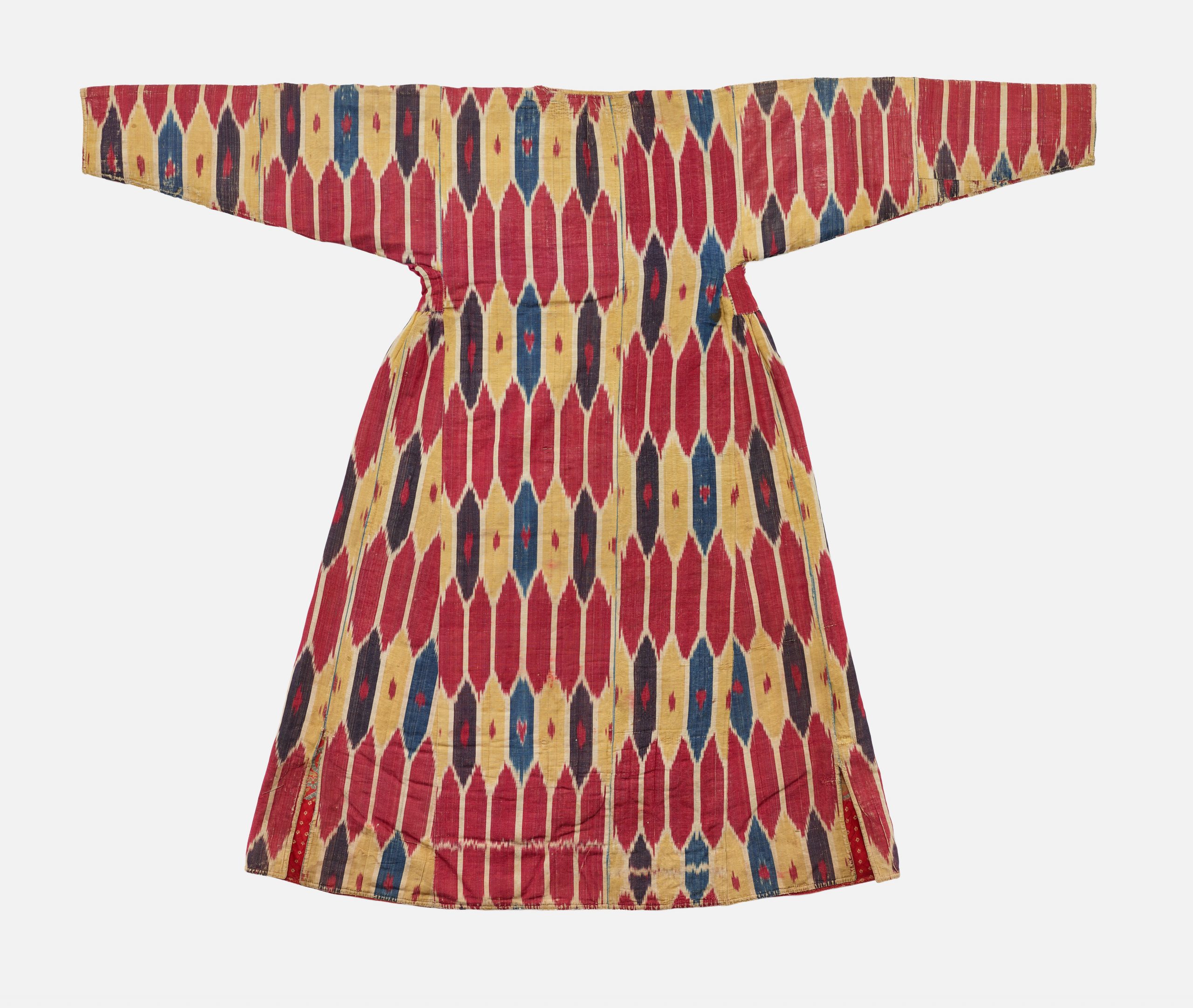
Woman's robe (munisak)
Central Asia, 1850–1900
Silk and cotton
Gift of Guido Goldman
Arthur M. Sackler Gallery, S2005.16
Image 18 of 18
Woman's robe (detail), Central Asia, Gift of Guido Goldman, S2005.15
- Jump To...

